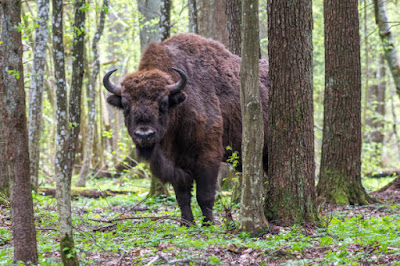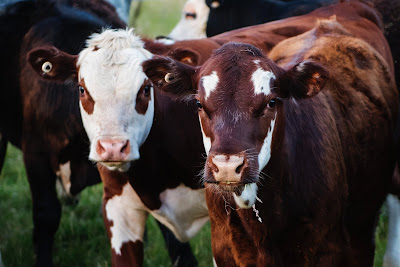Cows, belonging to the Bovidae family, are domesticated herbivorous mammals that have played an essential role in human civilization for thousands of years. Renowned for their docile nature, milk production, and contribution to the agricultural industry, cows have various species with distinct characteristics and roles. In this unique and extensive article, we delve into the world of cows, exploring ten different species and their fascinating attributes.
Bos taurus (B. taurus):
Bos taurus, also known as the domestic cow, is the most common and widely recognized species of cow. This species encompasses numerous breeds that vary in size, color, and purpose. Domestic cows are predominantly bred for their milk, meat, and hide, and are found all across the globe.
Bos indicus (B. indicus):
Bos indicus, commonly referred to as zebu or humped cattle, is native to the Indian subcontinent and other tropical regions. These cows have a distinct hump over their shoulders and are well adapted to hot and humid climates. Zebu cattle are valued for their ability to withstand high temperatures, resistance to diseases, and tolerance to drought conditions.
Bos primigenius (B. primigenius):
Bos primigenius, also known as aurochs, is an extinct species that served as the ancestor to modern domestic cattle. These large bovines roamed Europe, Asia, and North Africa thousands of years ago. Although no longer existing, aurochs played a crucial role in the evolution of domesticated cows and left a genetic legacy within modern breeds.
Bubalus bubalis (Water Buffalo):
Water buffalo, belonging to the Bubalus genus, are large bovines primarily found in Asia and parts of Europe. These animals are well adapted to wetlands and are known for their ability to thrive in muddy environments. Water buffalo are highly valued for their milk production, which is used to make various dairy products such as cheese and yogurt.
Bison bison (American Bison):
American bison, also referred to as buffalo, once roamed the vast grasslands of North America in immense herds. These majestic creatures are the largest land mammals in North America and have played a significant role in Native American cultures. Despite being hunted to near extinction in the past, conservation efforts have allowed their population to recover to some extent.
Yak (Bos grunniens):
Yaks are sturdy, long-haired bovines native to the Himalayan region of Asia. They have adapted to live in high-altitude terrains, with thick coats to protect against harsh weather conditions. Yaks are multipurpose animals, providing milk, meat, fiber for textiles, and transportation for local communities in the mountainous regions.
Gaur (Bos gaurus):
Gaur, also known as Indian bison, is the largest species of wild cattle. Native to South and Southeast Asia, these robust bovines inhabit forests and grasslands. Gaur have a distinctive muscular build, with a dark brown or black coat and white stockings on their legs. They play a vital role in the ecosystems they inhabit and are considered an endangered species.
Banteng (Bos javanicus):
Banteng is a species of wild cattle found in Southeast Asia, particularly in Indonesia. These bovines have a dark brown coat, white rump patch, and distinctive upward-curving horns. Banteng are known for their elusive nature and are highly valued in cultural traditions and hunting practices of indigenous communities.
Highland Cattle:
Highland cattle, a breed originating from Scotland, are known for their shaggy, long hair and impressive horns. These hardy cows are well adapted to harsh climates and rugged terrains, making them ideal for grazing in mountainous regions. Their long, thick hair provides insulation during cold winters, and their gentle temperament makes them popular among farmers and enthusiasts alike.
Ankole-Watusi (Sanga):
The Ankole-Watusi, also known as Sanga cattle, is a distinctive breed found in East Africa. These cows are famous for their enormous, elaborately curved horns, which can reach impressive lengths. The horns serve multiple purposes, including heat dissipation and defense against predators. Ankole-Watusi cattle are highly prized by local tribes for their cultural and economic significance.
DIARY CATTLE
Dairy cattle, a subset of domestic cows (Bos taurus), are specifically bred and managed for their milk production. These cows are highly valued for their ability to produce large quantities of milk, which serves as a vital source of nutrition for human consumption and the production of various dairy products.
Dairy breeds are selected and bred for their milk-producing traits, such as high milk yield, good udder conformation, and efficient conversion of feed into milk. Some of the popular dairy breeds include: Holstein, Jersey, Guernsey, Ayrshire, Brown Swiss, and Milking Shorthorn, among others. Each breed has its unique characteristics and milk composition, contributing to the diversity of dairy products available.
Holstein cows are the most common dairy breed worldwide, known for their large size, high milk production, and distinctive black and white markings. They are known for their efficiency in converting feed into milk, making them popular in commercial dairy farming. Holsteins have a lower milk fat content but produce a higher volume of milk.
Jersey cows, on the other hand, are smaller in size and have a fawn color with a white face. They are renowned for their high milk fat content, resulting in milk with a rich, creamy texture and flavor. Jerseys are often favored for specialty dairy products such as butter, cream, and high-quality cheeses.
Guernsey cows are medium-sized, with a reddish or fawn coat and white markings. They produce milk with a slightly higher fat content than Holsteins but lower than Jerseys. Guernsey milk is known for its golden hue, attributed to the presence of a higher concentration of beta-carotene.
Ayrshire cows are medium to large in size and have a white and red mottled coat. They are adaptable to various climates and produce milk with moderate fat content. Ayrshire milk is often used in cheese production.
Brown Swiss cows are large and have a solid brown coat. They are known for their docile temperament and milk with a high butterfat content. Brown Swiss cows are particularly valued in cheese-making due to the desirable characteristics of their milk.
Milking Shorthorn cows are medium-sized with a range of coat colors. They are dual-purpose breeds, meaning they can be used for both milk and meat production. While their milk production is lower compared to specialized dairy breeds, Milking Shorthorns are valued for their versatility.
Dairy cattle are managed through intensive husbandry practices, including regular milking, proper nutrition, and healthcare to ensure their well-being and optimal milk production. Milk from dairy cows serves as the primary ingredient for a wide range of dairy products such as milk, cheese, butter, yogurt, ice cream, and more.
In recent years, there has been increasing attention to sustainable and organic dairy farming practices, with an emphasis on animal welfare, pasture-based systems, and reduced reliance on synthetic inputs. These approaches aim to produce high-quality dairy products while minimizing environmental impacts and promoting the overall health of the cows.
Dairy cattle play a significant role in the agricultural sector, providing essential nutrition and contributing to the economy through the dairy industry. The milk they produce is not only a staple food but also a versatile ingredient that brings enjoyment and nourishment to people worldwide.
















